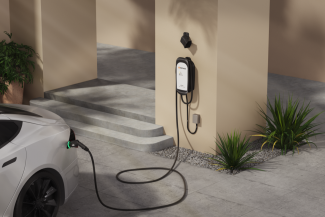You’ve decided to join the electric vehicle (EV) revolution. You research and determine which car makes the most sense for your driving habits and lifestyle. You congratulate yourself on doing your small part to save the planet.
Before you sign on the dotted line, however, it’s important to figure out how to charge your EV once you purchase it. The most convenient and economical way of powering your car is to charge it at your home while you sleep (you can also charge it while at work if your employer provides workplace EV charging—but that is a conversation for a different day).
It can seem overwhelming at first to figure out which home EV charger is right for you, particularly when there are so many options from which to choose. This article will help you understand the various chargers and what to consider before buying one.
Level 1 vs. Level 2 home EV chargers
Level 1 home EV chargers are the simplest to install because they do not require professional assistance. Typically, they can be plugged into a standard 120 V line without any other electrical work necessary. The downside to a Level 1 charger is that they are much slower than the more desirable Level 2 home EV charger.
In contrast, Level 2 chargers need a 240 V electrical line. Unless you are a professional electrician, you should not try to install a Level 2 charger yourself. The National Electrical Code (NEC) mandates an electrical circuit is rated for 20% greater amperage than your charger’s output. Check your electrical panel to find out how many amps your home has available for charging—a professional installer can help. Locate home EV charger installer here.
To make your decision easier, we have put a table below that compares Level 1 and Level 2 EV Chargers on different parameters:
|
Parameter |
Level 1 EV Charger |
Level 2 EV Charger |
|---|---|---|
|
Added RPH (Range Per Hour) |
3-5 miles RPH |
12-80 miles RPH |
|
Plug type |
NEMA 5-15 plug or hardwired |
NEMA 14-50 plug, NEMA 6-50 plug, or hardwired |
|
Installation |
Not required |
Professional installation for hardwired or outlet for plug in |
|
Power specifications |
110/120 Volts |
208/240 Volts |
|
Maximum amperage |
16 A |
80 A |
|
Power delivered |
1.2 kW |
19.2 kW |
|
Charging time (for 100 miles battery capacity) |
22-30 hours |
6-8 hours |
|
Price |
$350-$500 |
$600-$1,000 |



